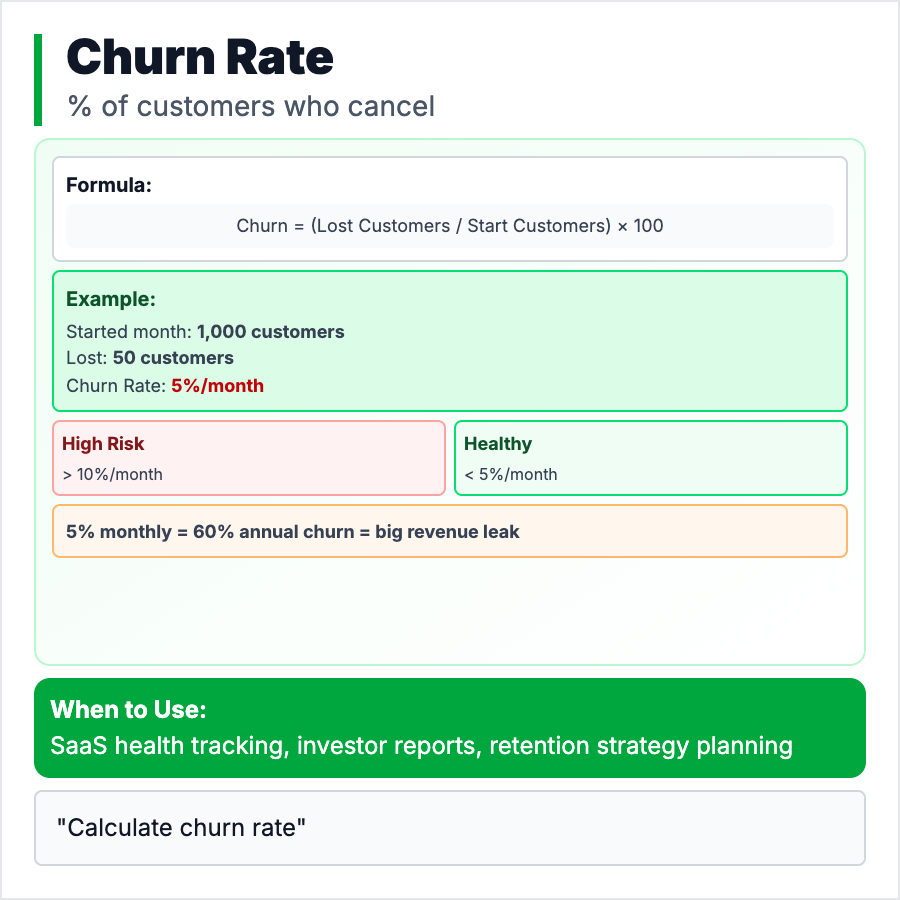
What is Churn Rate?
Churn Rate is the percentage of customers who stop using your product in a given period—monthly or annually. If you start the month with 100 customers and lose 5, your monthly churn is 5%. High churn kills growth—even if you acquire customers fast, you're filling a leaky bucket. Good B2B SaaS churn: <5% annual. Consumer products: often much higher. Retention is more important than acquisition.
When Should You Use This?
Track churn as soon as you have paying customers or active users. It's the most important metric after Product-Market Fit. Break it down by cohort (when did they sign up?), customer segment (enterprise vs SMB), and time-to-churn (do people leave in week 1 or month 6?). Focus on reducing churn before scaling acquisition—it's easier to plug the leak than pour faster.
Common Mistakes to Avoid
- •Only tracking new signups—growth doesn't matter if everyone leaves
- •Not segmenting churn—different customer types churn for different reasons
- •Ignoring early churn—if 50% leave in the first week, onboarding is broken
- •No churn interviews—talk to churned customers, learn why they left
- •Accepting high churn—consumer apps can have 60%+ annual churn and still work, but B2B needs <5%
Real-World Examples
- •Netflix—Low churn (~2% monthly) due to content library and habit
- •Enterprise SaaS—Typically 5-10% annual churn, lower with multi-year contracts
- •Consumer apps—Often 40-60% annual churn, compensate with low CAC and virality
- •Superhuman—Focused on retention before growth, got churn below 1% monthly
Category
Product Management